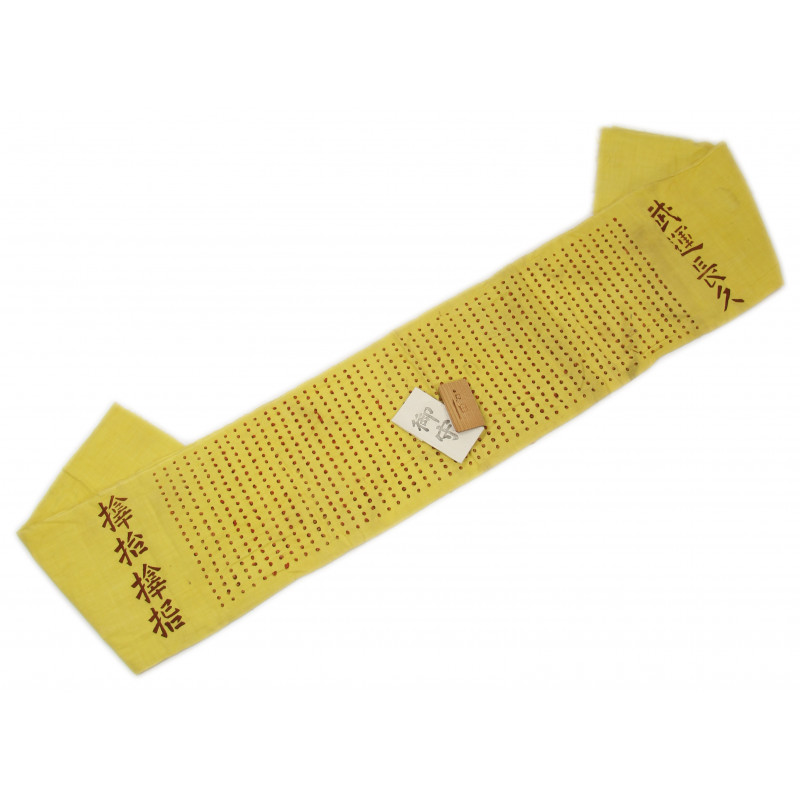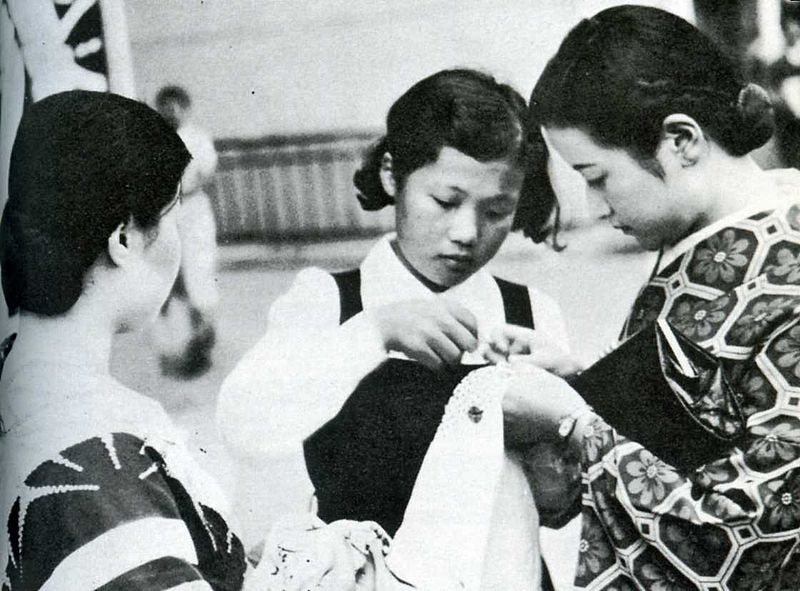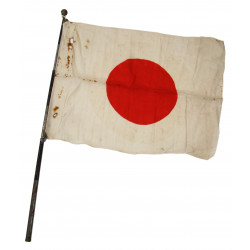








Very nice genuine WWII Japanese cloth belt, Senninbari haramaki. Just like the good-luck flag offered by families and friends (Hinomaru yosegaki) or the war banner given by some local association or patriotic organization (Shussei nobori), the 'one-thousand stitch belt' is one of the main spiritual protection artifacts carried by the Nipponese serviceman departing for war. Its origins seem to date back to the First Sino-Japanese War (1894-1895). Designed by the warrior's mother, sister, or spouse, it was a participative work, made up of a plain fabric strip intended for being tied around the waist, on which various motifs and messages of encouragement were to be sewn or inked: traditionally, a total of one thousand stitches had to be embroidered, and every single stitch was to be done by a different woman at the request of the initiator.
Made up of yellow material, the present belt is adorned with various ideograms printed on either side of the thousand stiches; a small wooden amulet, protected by a paper envelope, has been slit between the two panels.
Excellent overall conditon. Total length: about 44.5in.

You might also like

Very nice genuine WWII Japanese cloth belt, Senninbari haramaki. Just like the good-luck flag offered by families and friends (Hinomaru yosegaki) or the war banner given by some local association or patriotic organization (Shussei nobori), the 'one-thousand stitch belt' is one of the main spiritual protection artifacts carried by the Nipponese serviceman departing for war. Its origins seem to date back to the First Sino-Japanese War (1894-1895). Designed by the warrior's mother, sister, or spouse, it was a participative work, made up of a plain fabric strip intended for being tied around the waist, on which various motifs and messages of encouragement were to be sewn or inked: traditionally, a total of one thousand stitches had to be embroidered, and every single stitch was to be done by a different woman at the request of the initiator.
Made up of yellow material, the present belt is adorned with various ideograms printed on either side of the thousand stiches; a small wooden amulet, protected by a paper envelope, has been slit between the two panels.
Excellent overall conditon. Total length: about 44.5in.

The historical artifacts for sale at PARATROOPER’s are intended for collectors, history enthusiasts, historians and museum curators.
These items do not glorify or promote any of the political, ideological or racial opinions related to the global conflicts that bathed the 20th century in blood.
Besides, we remind you that Article R.645-1 of the French Penal Code establishes fines applicable to fifth class contraventions (except in the specific cases of a filming, show or exhibition which refer to historical events) for any individual who wears a uniform, insignia or symbol reminiscent of those worn by members of the various organizations declared criminal in application of Article 9 of the Charter of the International Military Tribunal annexed to the London Agreement of August 8, 1945 – SS, SD, Gestapo, Nazi leaders (the Führer, the Reichsleitung, the Gauleiters and their main collaborators, the Ortsgruppenleiter, the Zellenleiter and the Blockleiter), or reminiscent of those worn by any person found guilty, by a French or International Jurisdiction, of one or several crimes against humanity established by Articles 211-1 to 212-3 or mentioned in Law No. 64-1326 of December 26, 1964.
The Code provides additional penalties, including the confiscation of the items used or intended for committing the offence.

